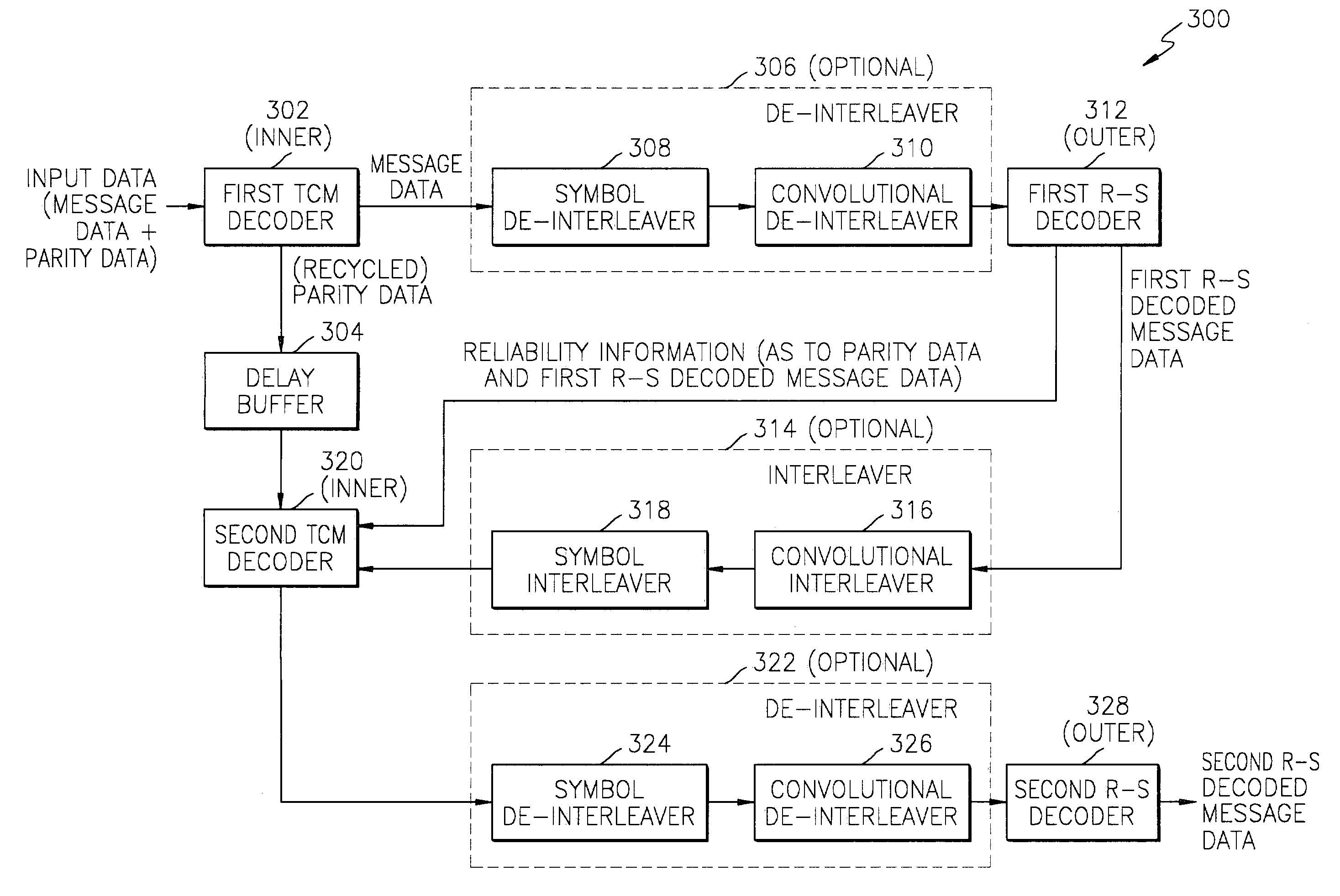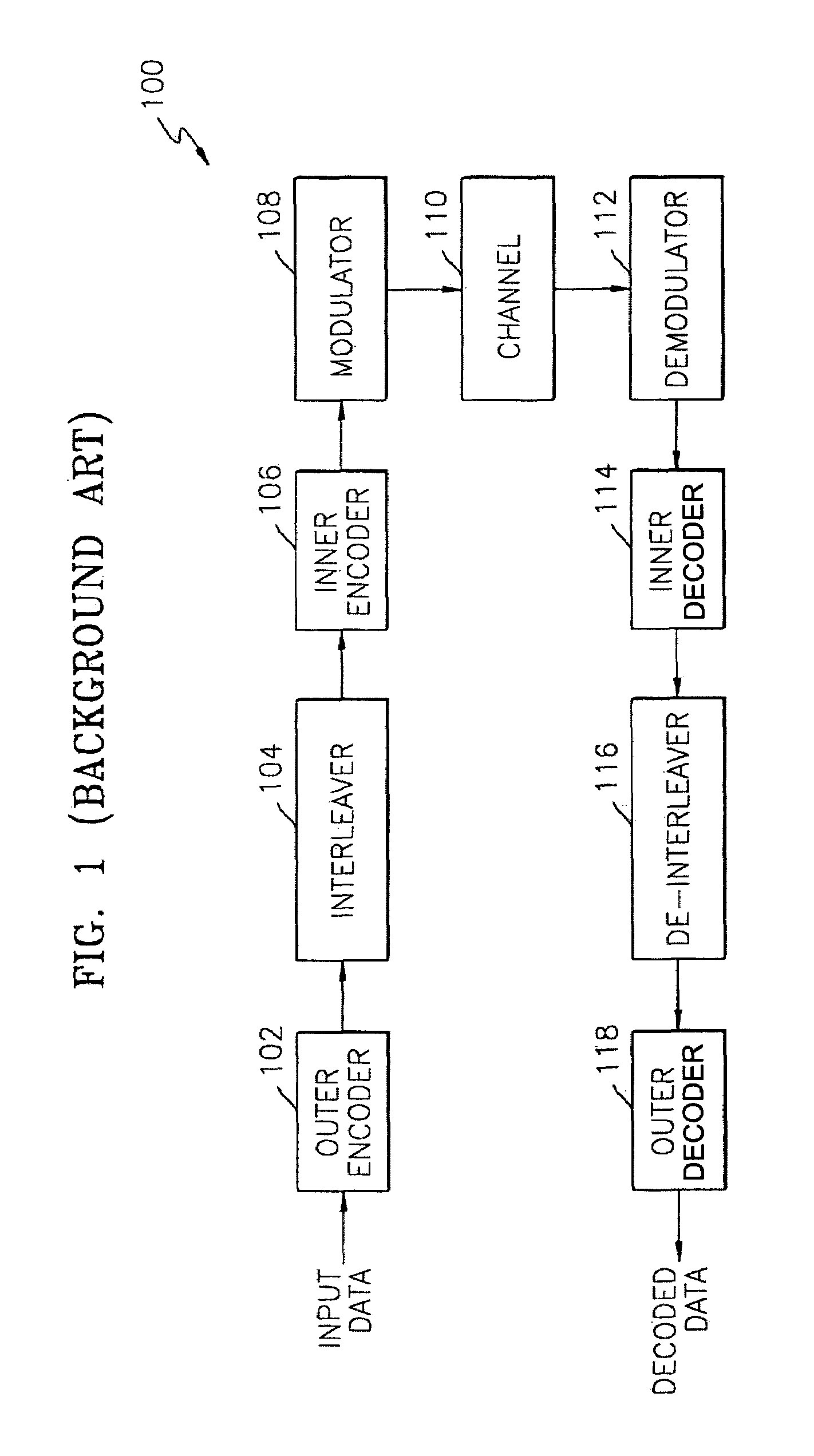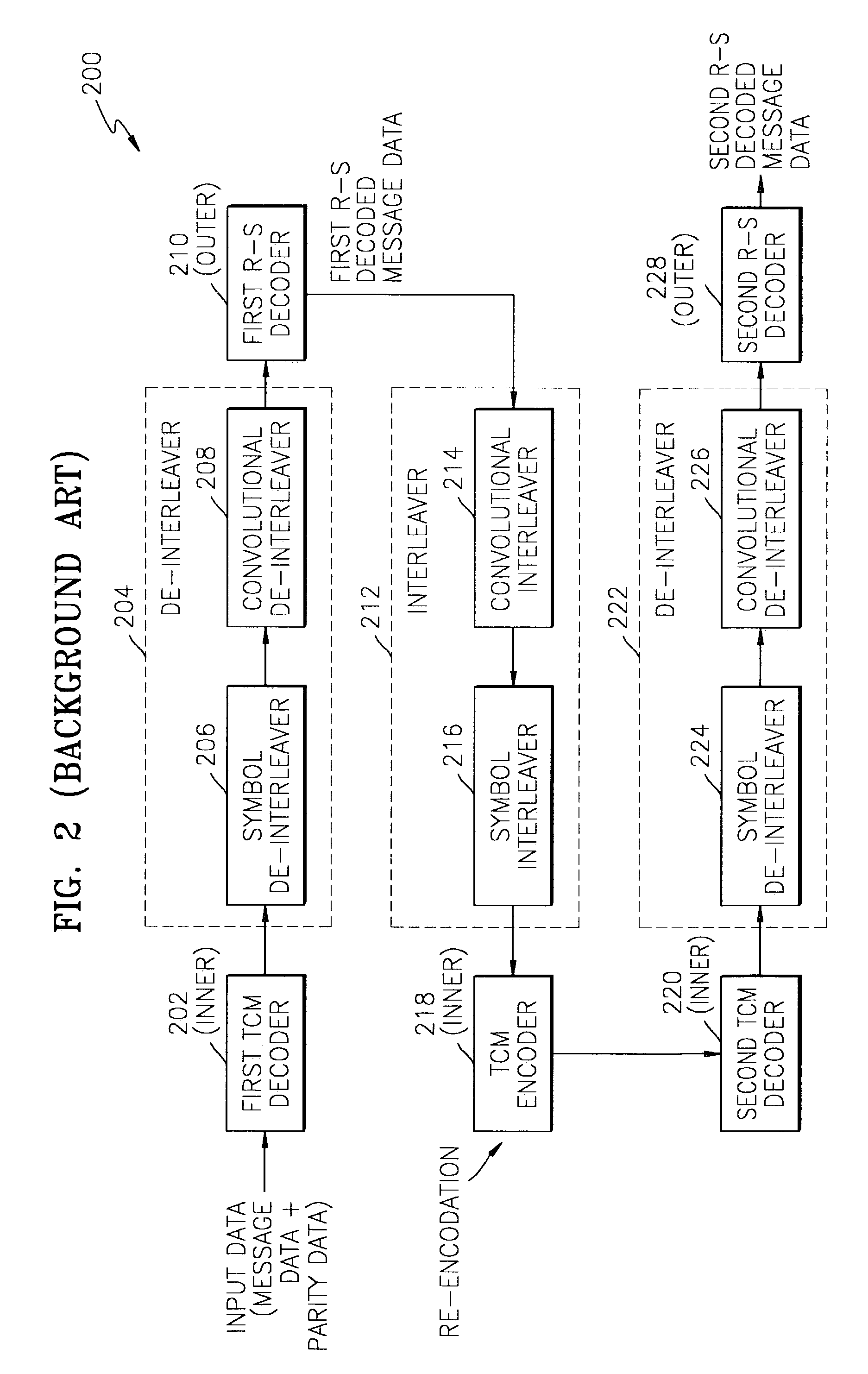Decoding concatenated codes via parity bit recycling
- Summary
- Abstract
- Description
- Claims
- Application Information
AI Technical Summary
Problems solved by technology
Method used
Image
Examples
Embodiment Construction
[0021]An embodiment of the invention represents a recognition of the following. Terrestrial broadcasting environments are really not AWGN channels. Rather, the received signals include the directly received version of the transmitted signal as well as reflections (indirectly received versions) of the transmitted signal. As a result, a signal that would arrive at a 14.9 dB level via an AWGN channel is more likely to arrive as a 14.6 dB signal in the real terrestrial broadcasting environments. This reduces an effective reception range of an 8-VSB decoder because, as noted above, the decoder 200 according to the Background Art will not decode a signal below 14.9 dB.
[0022]Another embodiment of the invention represents a recognition of the following. If there are errors in the first outer decoded message data from the first outer decoder 210, then parity data generated by the inner TCM encoder 218 (a re-encodation!) will have errors. And the second inner TCM decoder 220 cannot correct su...
PUM
 Login to View More
Login to View More Abstract
Description
Claims
Application Information
 Login to View More
Login to View More - R&D
- Intellectual Property
- Life Sciences
- Materials
- Tech Scout
- Unparalleled Data Quality
- Higher Quality Content
- 60% Fewer Hallucinations
Browse by: Latest US Patents, China's latest patents, Technical Efficacy Thesaurus, Application Domain, Technology Topic, Popular Technical Reports.
© 2025 PatSnap. All rights reserved.Legal|Privacy policy|Modern Slavery Act Transparency Statement|Sitemap|About US| Contact US: help@patsnap.com



